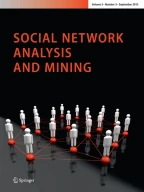Abstract
Crowdsourcing has been identified as a way to facilitate large-scale data processing that requires human input. However, working with a large anonymous user community also poses new challenges. In particular, both possible misjudgment and dishonesty threaten the quality of the results. Common countermeasures are based on redundancy, giving way to a tradeoff between result quality and throughput. Ideally, measures should (1) maintain high throughput and (2) ensure high result quality at the same time. Existing research on crowdsourcing mostly focuses on result quality and pays little attention to throughput or even to the tradeoff between the two. One reason is that the number of tasks (atomic units of work) is usually small. A further problem is that the tasks themselves are small as well. In consequence, existing result quality-improvement mechanisms do not scale to the number or complexity of tasks that arise, for instance, in proofreading and processing of digitized legacy literature. This paper proposes novel mechanisms that (1) are independent of the size and complexity of tasks and (2) allow to trade result quality for throughput to a significant extent. Both mathematical analyses and extensive simulations demonstrate the effectiveness of the proposed mechanisms.
Similar content being viewed by others
Notes
This is the mode we use in our evaluation.
Note that ‘hypothesis’ does not mean ‘a research hypothesis of ours’ in this current context; it means the hypothesis that a user has a sufficiently low error probability to be eligible for a vote boost.
Note that the parameter values increase exponentially, so the plots in the figure actually are linear.
References
AMT. The Amazon Mechanical Turk, http://www.mturk.com
Cooper S, Khatib F, Treuille A, Barbero J, Lee J, Beenen M, Leaver-Fay A, Baker D, Popovic Z (2010) Predicting protein structures with a multiplayer online game. Nature 466:756–760
Eckert K, Niepert M, Niemann C, Buckner C, Allen C, Stuckenschmidt H (2010) Crowdsourcing the assembly of concept hierarchies. In: Proceedings of JCDL 2010, Brisbane, Australia
Lintott CJ, Schawinski K, Slosar A, Land K, Bamford S, Thomas D, Raddick MJ, Nichol RC, Szalay A, Andreescu D, Murray P, Vandenberg J (2008) Galaxy Zoo: morphologies derived from visual inspection of galaxies from the Sloan Digital Sky Survey. Monthly Notices of the Royal Astronomical Society, 389. doi: 10.1111/j.1365-2966.2008.13689.x
Newby GB, Franks C (2003) Distributed proofreading. In Proceedings of JCDL 2003. Houston, TX, USA. doi:10.1109/JCDL.2003.1204888
Sautter G, Böhm K (2011) High-throughput crowdsourcing mechanisms for complex tasks. In: Proceedings of SocInfo 2011, Singapore
Sautter G, Agosti D, Böhm K, Klingenberg C (2009) Creating digital resources from legacy documents—an experience report from the biosystematics domain. In: Proceedings of ESWC, Heraklion, Greece
Siorpaes K, Hepp M (2007) OntoGame: towards over-coming the incentive bottleneck in ontology building. In: Proceedings OTM 2007, Vilamoura, Portugal
Snow R, O’Connor B, Jurafsky D, Ng AY (2008) Cheap and fast — but is it good?: evaluating non-expert annotations for natural language tasks. In: EMNLP 2008, Morristown, NJ, USA
Von Ahn L (2006) Games with a purpose. IEEE Comput 29(6):92–94
Von Ahn L, Blum M, Hopper N, Langford J (2003) CAPTCHA: using hard ai problems for security. Advances in cryptology—EUROCRYPT 2003. Springer Berlin/Heidelberg. doi:10.1007/3-540-39200-9_18
Von Ahn L, Maurer B, McMillen C, Abraham D, Blum M (2008) reCAPTCHA: Human-Based Character Recognition via Web Security Measures. Science 321 (5895). doi:10.1126/science.1160379
Author information
Authors and Affiliations
Corresponding author
Rights and permissions
About this article
Cite this article
Sautter, G., Böhm, K. High-throughput crowdsourcing mechanisms for complex tasks. Soc. Netw. Anal. Min. 3, 873–888 (2013). https://doi.org/10.1007/s13278-013-0114-z
Received:
Revised:
Accepted:
Published:
Issue Date:
DOI: https://doi.org/10.1007/s13278-013-0114-z
